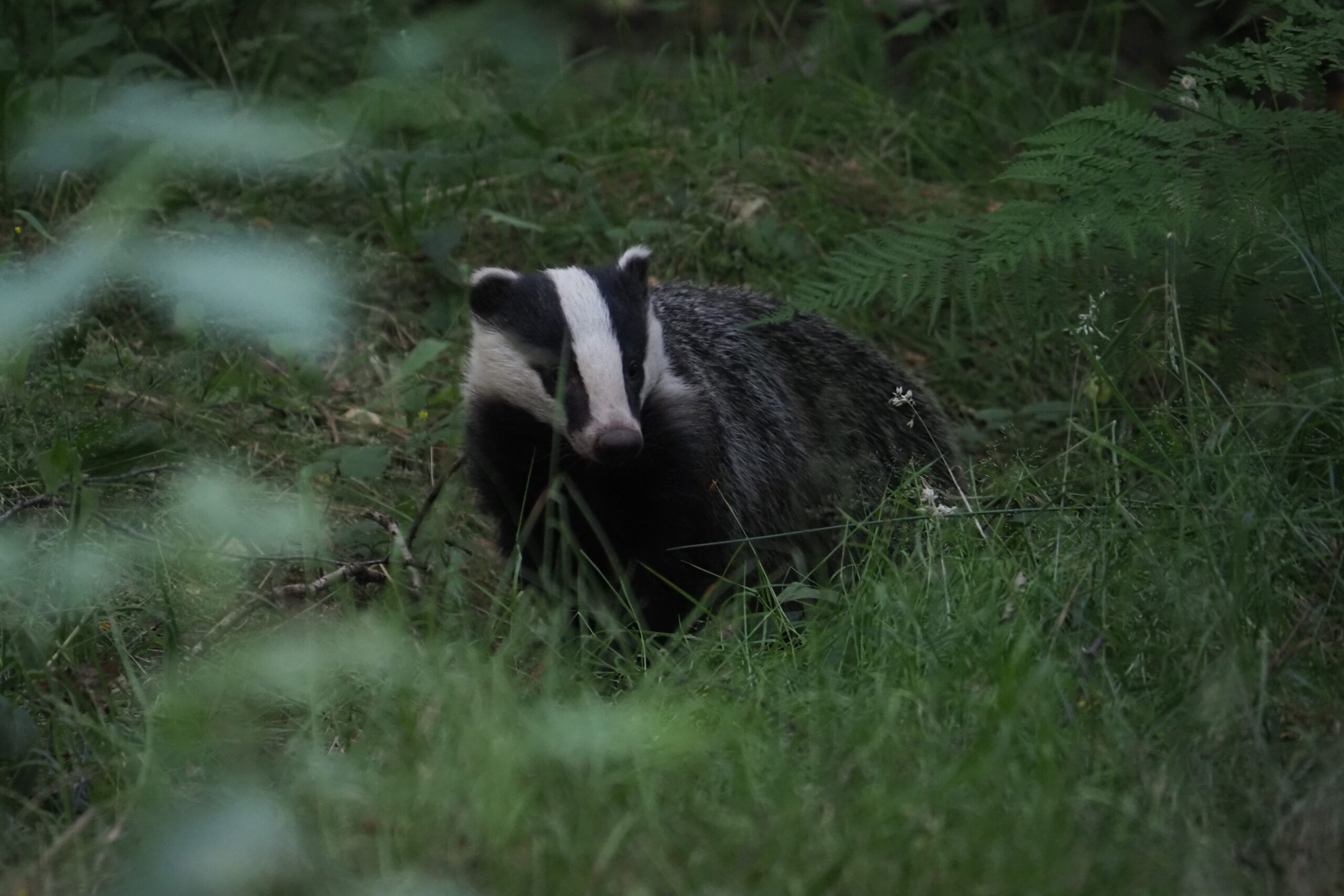The Curious Case of Badger Behaviour
The badgers at the Falls of Clyde are probably our most famous residents. With an estimate of between 50-60 within the reserve there are constantly signs, showing the activity badgers are carrying out even if you do not directly see them on a walk. Whether it be scent markings on the edge of very turbulent territory boundaries, or the abundance of badger paths which weave their way around our human footpaths. Badgers have been the stuff of folklore for hundreds of years, and as we have transitioned into an era of scientific process, our fascination for badgers has not changed, and for good reason: Badgers are very special animals.

Badgers live underground in setts with other members of their close family. There may be many generations of badgers living within a sett, up to 10 individuals at times. Badgers were first noticed as being interesting scientifically for two reasons:
1. Some badgers live in mixed sex groups defending a territory, however other members of the mustelid family, such as stoats, otters, and pine martens, live alone and defend territory against other individuals of their sex, but not the opposite sex.
2. Badgers are carnivorous, but unlike other social carnivores like lions, wolves, even orcas – they do not hunt together, or assist each other with parental care or defence against antagonists. So, what is going on in badgers?
It was long thought that the best reason to live socially was to help members of your group to hunt. In this situation, hunting costs less energy as you will work together, likewise defending a large territory becomes far easier when you can do it with others. Hans Kruuk , a pioneer in the field of behavioural ecology, was intrigued by this, enough to start studying badgers, to try and find out why they would live in groups at all, what benefit could there be?
He proposed that the origin of badgers’ social nature was based in their ecology, not their behaviour towards each other. Places which have enough food will be able to support group living. Their food of choice are earthworms – which means that food availability can be unpredictable over a space and can vary massively throughout the year. Because of this, badgers want a territory that has a variety of patches, where local conditions are different. These patches will vary in key aspects, such as wind direction and elevation. A territory for badgers will need to contain a number of these patches, and when conditions are right any one of these will contain an incredibly large number of earthworms. Because of this, a territory which can support a single badger can support extra badgers at no extra cost.
It makes sense, right? In fact, in areas where food is more scarce, Eurasian badgers will only have one adult of each sex. This only changes in places where ecological factors make this a possibility. This topic is still debated amongst scientists today, but if nothing else this should show that badgers are similar to humans in one key way; good food makes living together easier.
Badgers scent marking at the Falls of Clyde
This blog was written as part of our Brocktober event, which is a collaboration between two charities: the Scottish Wildlife Trust and Scottish Badgers. For more information on Brocktober please visit the link here.
Brocktober – A month of events & activities to celebrate badgers! – Scottish Badgers
For further information on badger behaviour, as well as scientific discussions around this theory see the links below, outlining its origins and drawbacks.
Foraging and spatial organisation of the European badger, Meles meles L. | SpringerLink
Food, Food Availability and Weight of Badgers (Meles meles) in Relation to Agricultural Changes on JSTOR
Does the resource dispersion hypothesis explain group living?: Trends in Ecology & Evolution (cell.com)
What Does the Resource Dispersion Hypothesis Explain, If Anything? on JSTOR
Peter Fuller
Falls of Clyde Seasonal Ranger
Help protect Scotland’s wildlife
Our work to save Scotland’s wildlife is made possible thanks to the generosity of our members and supporters.
Join today from just £3 a month to help protect the species you love.
Preface
The badgers at the Falls of Clyde are probably our most famous residents. With an estimate of between 50-60 within the reserve there are constantly signs, showing the activity badgers …
